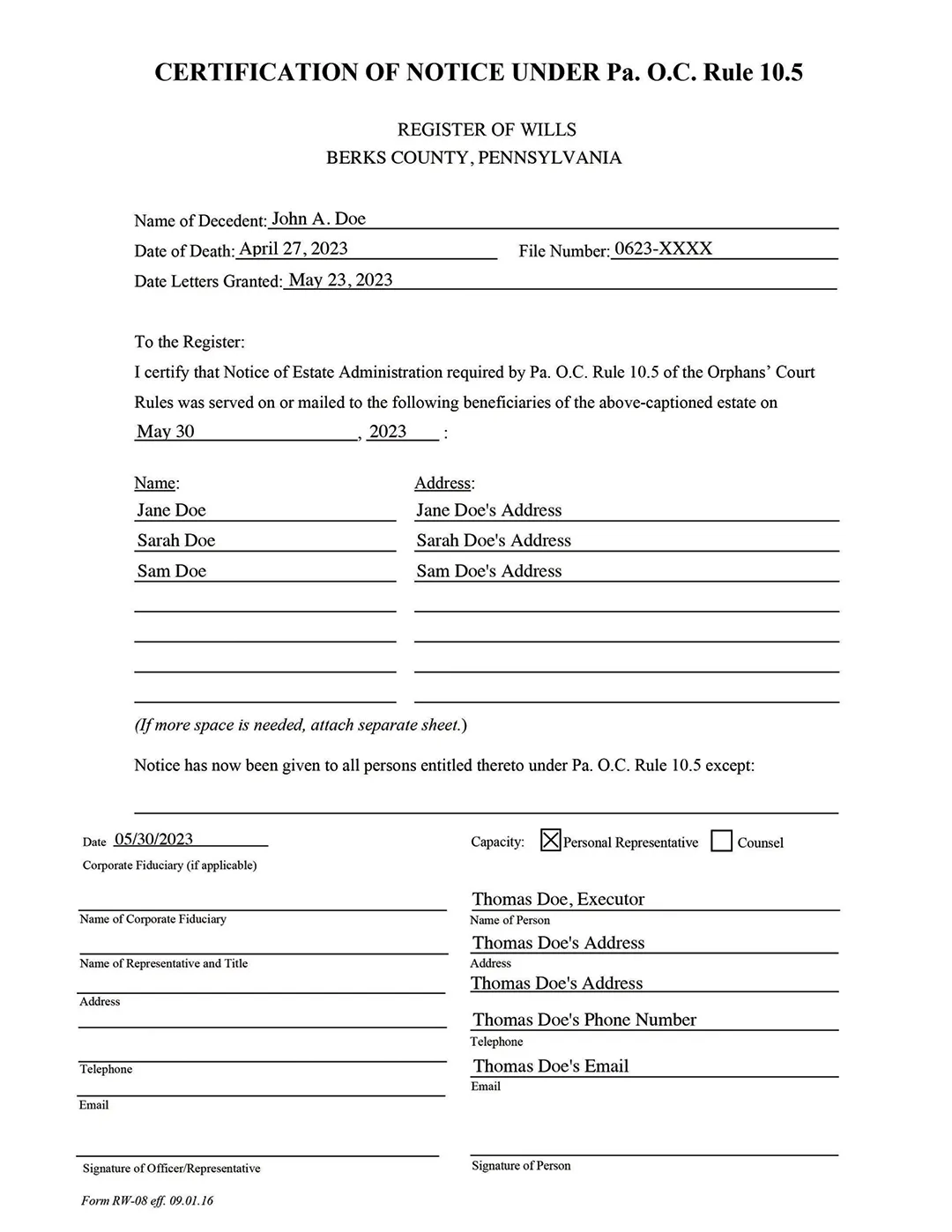
Completing Certification of Notices (10.5s) in the Estate Process
Running an estate under Pennsylvania law can be a complicated process. It’s important to be sure to take each step in the appropriate time frame to ensure that your estate is compliant with the law.
Once you’ve successfully completed probate and have been named as the administrator or the executor of an Estate, you may be overwhelmed by the responsibilities and requirements needed to ensure you’re following Pennsylvania law. One such requirement of Estates that may be unclear is completing the Certification of Notices, commonly referred to as 10.5 Notices. These notices are named for the Orphans’ Court Rule that requires them, which is cited in legal texts as Pa. O.C.R. 10.5. These notices must be sent within three months from the date the Grant of Letters and the Short Certificates were issued. They serve to alert anyone who may receive distributions from the Estate that the Estate has been opened.
Who should the Certificate of Notice be sent to?
This can differ based on whether the deceased individual had a Will. If there is a Will, you’ll want to have the Will handy when determining who should be a recipient.
- If there is a Will, 10.5 Notices should go to any person, entity or other party named in the Will as a beneficiary, as well as the decedent’s spouse and children regardless of if they were named in the Will. They should also go to the appointed guardian of any beneficiary who is a minor or an incapacitated person. If there is a charitable donation provided in the Will, the Attorney General of Pennsylvania received notice, as the Attorney General’s office acts as the attorney to represent nonprofit interests in estates.
- If there is no Will, 10.5 Notices should go to: any person to whom would receive funds according to Pennsylvania’s intestate laws (intestate simply meaning the steps taken when someone dies without a Will), and the appointed guardian of any beneficiary who is a minor or an incapacitated person.
Once all Notices are prepared, a final notice should be sent to the County in which the Estate has been Probated. This notice lists all the individuals or entities that have been made aware of an opened Estate for the County.
These notices can be sent to both the beneficiaries and the County via regular, USPS mail.
What should these Certificate of Notices look like?
Here’s an example of the Individual Certification of Notice, which goes to beneficiaries, as well as the County Certification of Notice, which goes to, as you’d imagine, the County. These examples have been filled out for use in Berks County. Keep in mind, these are simply examples and should act as a guide to completing these notices rather than a hard and fast rule on what should be specified in each Estate. Every Estate is different, and every Estate may have different distributions provided for.


Conclusion: Contact an Estate Administration and Probate Attorney for Help with the Administration Process
While we hope this guide helps you navigate Certification of Notices, we understand that many other aspects of Estate Administration can seem daunting. The experienced Estate Administration lawyers here at Cornerstone Law Firm are ready to assist you in navigating through whatever step you’re stuck on as you work towards completing the Estate. Call us today to set up a free consultation.


